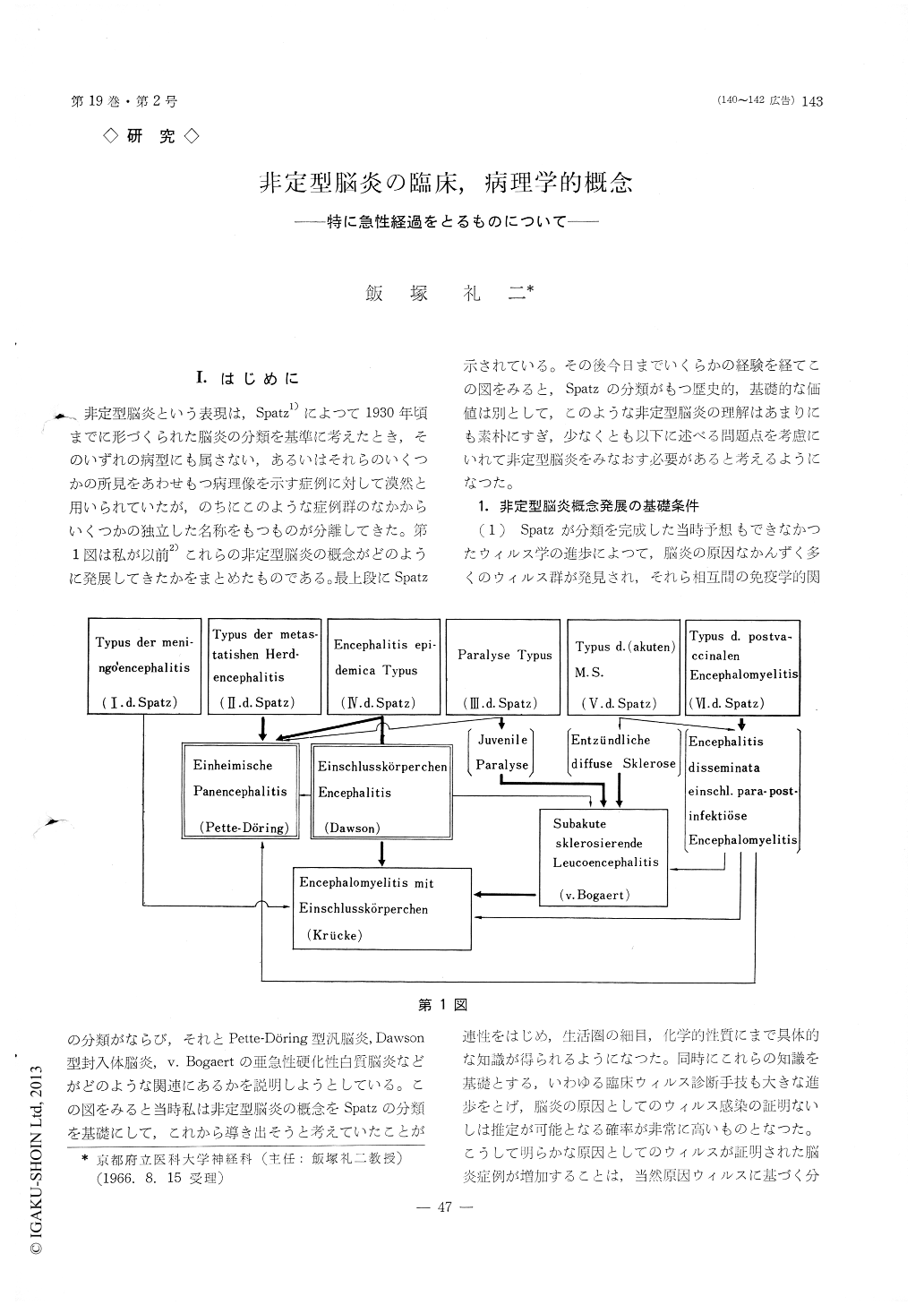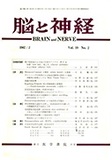Japanese
English
- 有料閲覧
- Abstract 文献概要
- 1ページ目 Look Inside
I.はじめに
非定型脳炎という表現は,Spatz1)によつて1930年頃までに形づくられた脳炎の分類を基準に考えたとき,そのいずれの病型にも属さない,あるいはそれらのいくつかの所見をあわせもつ病理像を示す症例に対して漠然と用いられていたが,のちにこのような症例群のなかからいくつかの独立した名称をもつものが分離してきた。第1図は私が以前2)これらの非定型脳炎の概念がどのように発展してきたかをまとめたものである。最上段にSpatz示されている。その後今日までいくらかの経験を経てこの図をみると,Spatzの分類がもつ歴史的,基礎的な価値は別として,このような非定型脳炎の理解はあまりにも素朴にすぎ,少なくとも以下に述べる問題点を考慮にいれて非定型脳炎をみなおす必要があると考えるようになつた。
Observations were made on 19 cases of atypical encephalitis. Eleven were dead, and of these ten underwent autopsy. Characteristics of the clinical course were rapid rise in body temperature, and severe disturbance of consciousness with generalized or localized seizures. Generally speaking, neurologi-cal signs and symptoms were extremely slight.
In regard to the disturbance of consciousness the cases were classified into the following three groups; i) camatous type, ii) stuporous type, and iii) delirious type.
On the basis of the neuropathological findings, the cases of atypical encephalitis were divided as follows; i) acute necrotizing encephalitis, ii) acute haemorrhagic encephalitis, iii) acute encephalitis of lymphocytic type, and iv) acute encephalitis of pe-rivenous type.
From the clinical point of view, through exami-nation not only of the nervous system but also of the entire body is a prerequisite, and when ence-phalitis is suspected, virus isolation or serological tests using suitable sample material should be made immediately. And when death occurs, detailed patho-logical consideration not only on the nervous system but also on the entire body is required.

Copyright © 1967, Igaku-Shoin Ltd. All rights reserved.


